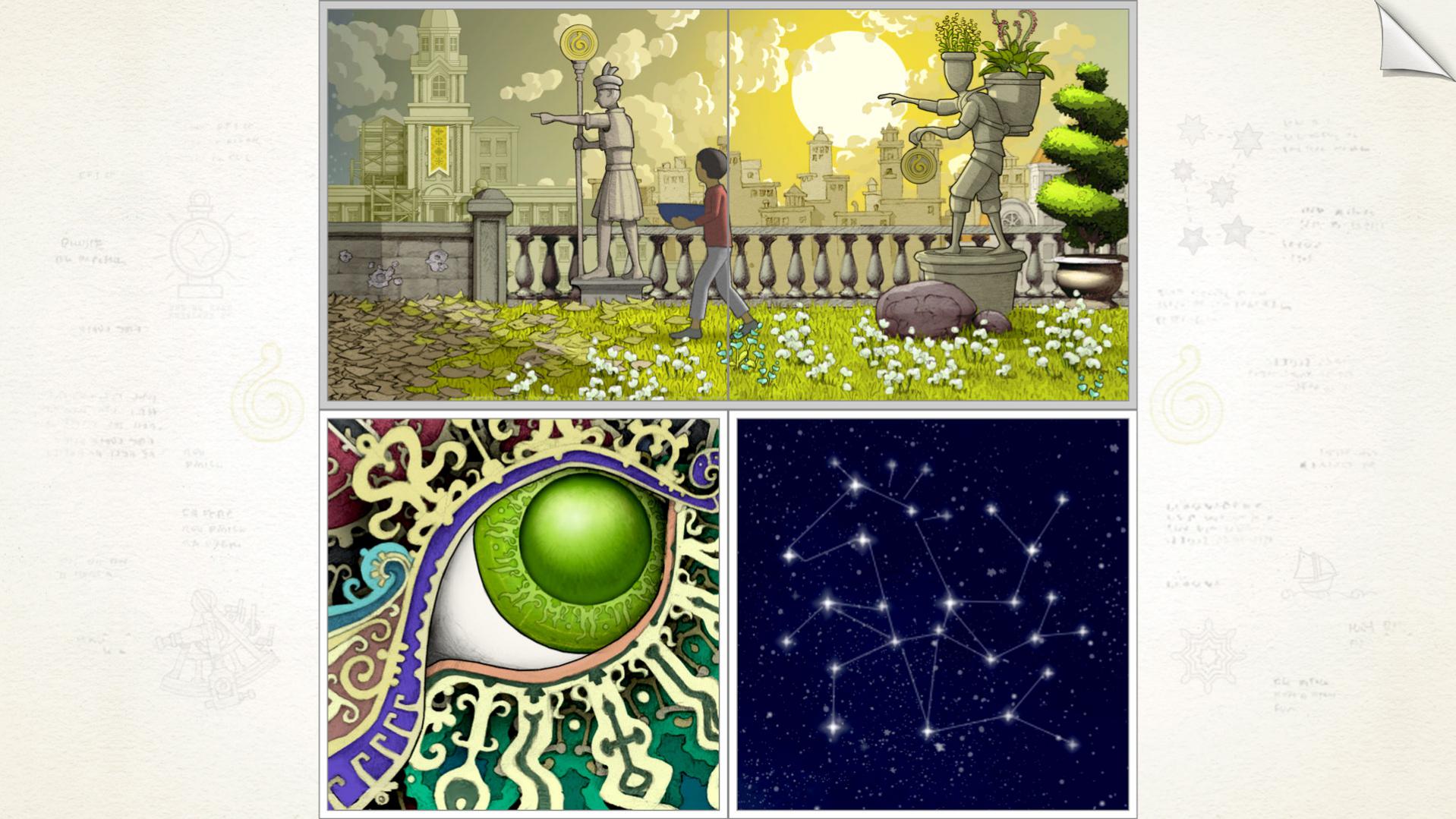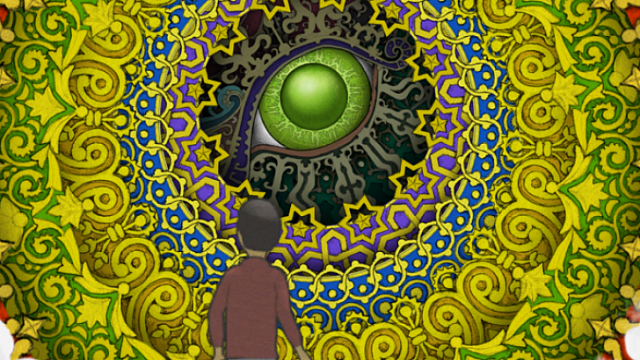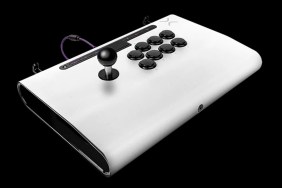I first played Gorogoa in an alpha version a year or so ago. It was a game I found on my own while reading some article, and I really enjoyed what I saw. It was another one of those labor of love games that you see pop up now and then. Most of those titles never quite make it to completion, but Gorogoa stands out as one of the few that is a fully released game.
The developer Jason Roberts spent seven years crafting Gorogoa, and you can tell the care that went into the game with the absolutely lovely artwork and the cleverness of the puzzles. The animation and illustrations remind me of a classic children’s book. I think what struck me most was the “softness” of the art. It seems like so often now that even with games styled as if they were hand drawn there’s a certain sharpness that really brings attention to the fact that the art is computer-assisted. Of course, Gorogoa has the advantage of having a static layout to facilitate the art style, but it’s still impressive.
Abstract, But Not Pretentious

Gorogoa doesn’t rely heavily on exposition to engage the player. There is a story, though I didn’t 100% follow it. It involves a young boy collecting five colored orbs to stop some sort of rainbow dragon. There’s also what seems to be depressed and downtrodden older men scattered throughout the panels. Also, the little boy might be part of the older men’s imaginations. I’m not sure. A few years ago I would have found the whole thing too pretentious to enjoy, but I’ve learned just to appreciate what I can when it comes to these avant-garde games, and leave the rest alone.
I found that there’s plenty to love about Gorogoa even if the story is somewhat sketchy. In a way, I think the lack of a very coherent story would have been detrimental in this game because the artwork and animation are what’s really appealing. It might be silly to find a story distracting, but I think being able to just enjoy the sights and sounds of the game without having to be too emotionally involved with the characters made the whole experience more relaxing.
Panel Puzzles
The gameplay is reminiscent of titles like the Samarost series and Machinarium, but with a twist that makes it unique. When starting the game, you’re presented with a set of 2×2 panels, like a comic strip or a photo album. Each panel can have a piece of the world on it which you can move and interchange with the other panels at will.
Many of the puzzles in Gorogoa are solved by moving these panels into a specific arrangement. You may have the left part of a room in one panel, and have to place a panel containing the right side in the proper location to continue moving forward. Additionally, some panels will have transparent spots, which means you can place them on other panels to conjure an object into them. A panel with a lamp might have to be lined up on top of a panel containing a star, which will then ignite the lamp.
Also: Romancing SaGa 2 Review – Keeping Up With the Avalonians
As you go on you’ll discover new panels inside of objects you find. You’ll have to zoom into the panel-in-a-panel, complete a task, then back out to the original panel to complete a puzzle. There’s a surprising amount of variation that the developer was able to included using mainly just the movement of panels to create puzzles.
As the game goes on, puzzles get more complex and involve using up to all four panels, each with their own sub-panels, to solve a single puzzle. None of the puzzles in Gorogoa are too tough, but they’re interesting, and the artwork makes you want to solve them so you can see what fantastic place will appear next.
Left Me Wanting More

Where Gorogoa takes a big hit is length. I hate to use price as a metric as to how long a game should be since you can’t really quantify how much each hour of a game should be worth. However, at only around an hour-and-a-half, and a $14.99 price tag (20% off/$11.99 as of writing) seems a little steep, especially for a title that doesn’t have a ton in the way of replay value. That’s down to the eye of the beholder though, and I have to say Gorogoa is definitely a unique and beautiful game, even if it isn’t lengthy.
If you thrill in playing games that represent the sweat and tears of a developer, Gorogoa is a great game to purchase. It’s absolutely gorgeous, and I found it supremely meditative. It presents you with a bevy of unique puzzles without being overly demanding of how long it takes you to solve them. It’s bright colors, beautiful artwork, and unique style make it an entirely outstanding indie game, though it might not suit everyone’s fancy.
-
Beautiful hand-drawn graphics.
-
Unique puzzle mechanics.
-
Relaxing soundtrack.
-
A bit pricey for how short it is.
-
Narrative is very opaque.










